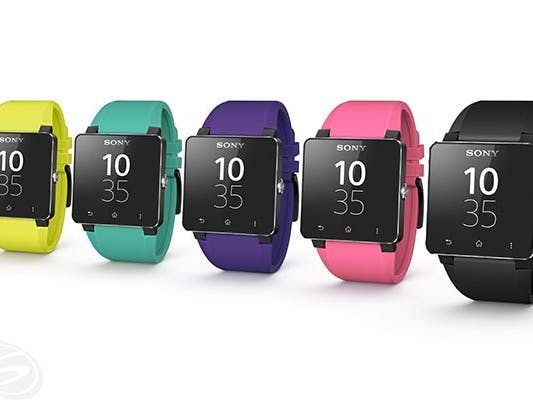Interview #1:
I went to People’s Café to find interviewees. I noticed a man looking at Google Earth on his computer, and figured he was probably a knowledgeable guy. He teaches Urban Studies and Planning at San Francisco State University. He was a late adopter of smartphone technology and uses an iPhone 4. He always carries his phone in his pocket and so wouldn’t have much use for a smartwatch. He did however present many great ideas for things he thought might be useful smartwatch applications. These include voice recognition, using the watch for purchases, and tide updates. He also said he would like to be alerted of changes in barometric pressure when mountaineering. I thought this was his most interesting idea. I wanted to find more mountaineers, but I didn’t know where to find them.
Interview #2:
I moved to Peet’s for my next interview. I wanted to interview a woman because I figured they may not want to have to dig through their purse to find their phone. I spoke to a woman who was using her iPad. She mentioned that some problems she has with her iPhone are fat fingers and the screen is hard to read. She also said that the keyboard is too small. She wasn’t too interested in the idea of smartwatches and lamented that people do not have as much face to face interaction as they used to. She had some good ideas for smartwatch applications like language translation. She said it might be good for young parents, which made me think it could be used as a baby monitor. She was a second grade teacher and is currently studying to be a nurse.
Interview #3:
I went to my friend’s work barbeque, where there were plenty of nonstudents. I overheard a man talking about climbing, but it turns out he meant climbing a hill when cycling. I spoke with him and another man about what they thought could be useful in a cycling application for a smartwatch. They thought it would mostly be useful for the first time you’re cycling on a road. One of the men suggested a graphical interface rather than numbers because it’s hard to interpret that information when you’re busy cycling. I also spoke to a man who said he recently started climbing, but he doesn’t do mountaineering. He said useful things for a mountaineering app might be altitude alarms, temperature, and an oxygen sensor for the watch.
Ideas:
1. Sports game score updates
2. App for swimmers to time themselves and measure their progress
3. Count steps (like a fitbit)
4. Traffic updates
5. Read on phone or tablet, word definitions appear on smartwatch
6. Compass
7. Mountaineering app (warnings and information)
8. Movie times
9. Phone number look up (like a phone book)
10. Health monitor (pulse, temperature)
11. Infrequent calendar reminders
12. Translator
13. Wallet (pay for things via scanning or otherwise)
14. Calculator
15. Date
16. GPS
17. Weather
18. Clipper card
19. Parking meter notification
20. Cycling app
21. Baby monitor
Prototype:
It was hard to decide between making a prototype for a cycling application or for a mountaineering application. Ultimately, I decided to go with a mountaineering application. Though less practical, it’s more unique and I find it very interesting. There are issues like retrieving data on a mountain, but let’s imagine that we can. Mountaineers need various alerts such as weather conditions, altitude, oxygen levels, and any known dangers like crevasses or falling ice.
The mountaineer will be alerted of dangerous weather conditions like whiteouts, thunderstorms, and winds. The user will be able to set how often they would like to be alerted of increasing altitude in meters or feet. This is important so that the mountaineer may avoid altitude sickness. Ideally, the watch would have a small oxygen sensor attachment or wirelessly connect with one and would alert the user to use an oxygen tank when necessary.
Many dangers are only present some of the time or are hard to pinpoint. For example, in order to know where crevasses are, a mountaineer must spot them. If the mountaineer found a crevice and logged its location, the app would be able to alert the next mountaineer that he is approaching a crevasse. This is important because crevasses are often hidden by snow. Another obstacle of mountaineering is falling ice. The places where ice may fall can always be determined beforehand. A skillful and experienced ice-man will usually devise a safe route through a most intricate ice-fall, but such places should be avoided in the afternoon of a hot day.
The app would also feature a compass, a necessity for a mountaineer.
User testing and insights:
I would have liked to test my prototype with a mountaineer, but I wasn’t sure exactly where I could find them. I asked my friend to test my prototype. She gave me the following feedback:
· Include direction of wind
· Mountain background picture
· Sidebar
· No tapping – voice commands
· Distance traveled
· Odometer: how fast you’re climbing
I didn’t really present any way to switch from different aspects of the app, so some sort of sidebar or menu would be a good idea. Instead of tapping to get from screen to screen, the user should be able to use voice commands because their hands might be otherwise engaged. Also, I think there would be great utility in knowing how fast you’re climbing, especially if you’re trying to reach a certain point by nightfall. I really appreciated her feedback and I think she had some good ideas.



Comments